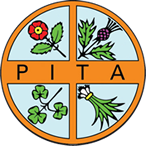AN arm of the Department of Trade and Industry (DTI) said it is hoping to raise farmers’ incomes by using waste material from the pineapple-growing progress to make specialty paper that can replace plastic packaging.
The DTI’s Design Center of the Philippines calls the initiative the Pinyapel Project, after the Filipino words for pineapple (pinya) and paper (papel). “The Pinyapel Project began with the intent of maximizing the use of agricultural waste to improve the livelihood of farmers, address concerns on dwindling natural resources and offer alternatives to plastic; collaborate with local enterprises; and consequently, show to the world what the creative and design mind of the Philippines can do,” Design Center Executive Director Rhea O. Matute said.
Design Center was established in 1973 through Presidential Decree No. 279 to develop, promote, and enhance the design of the country’s manufactured goods. The Pinyapel project is led by its materials research and development team. Pinyapel uses material left over after the pineapple harvest. Development started in 2018 and is ongoing.
“The inspiration behind the product is the growing packaging needs. According to the Pollution Control Association of the Philippines, our country will not be ready to phase out plastic use until cost-effective alternatives are available,” Ms. Matute said. “Sustaining the use of pineapple leaves in paper production will ultimately contribute to changing the lives of pineapple farmers and laborers,” she added.
Pineapple leaves were sourced from Nature’s Fresh Pineapple, Inc., which cultivates 300 to 400 hectares in Aglayan, Malaybalay City, Bukidnon. It can produce about one to five tons of pineapple leaves per month, with 57 kilograms yielding about 88 sheets of 70 by 100-centimeter Pinyapel. Pinyapel can also be turned into corrugated cup sleeves and gift bags.
“Our country will not be ready to phase out plastic use until cost-effective alternatives are available. Pinyapel offers to become one of the solutions to plastic waste by becoming an alternative material for packaging applications since paper,” Ms. Matute said.
